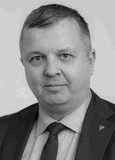EVALUATION OF THE POWER OF MOVEMENTS OF ROWERS-CANOEISTS BASED ON THE SPATIAL RECONSTRUCTION OF THE STROKE
Abstract
Objective of the study was to determine the biomechanical characteristics of rowing and their relationships in the "oar-water-boat" system. Show new methods for quantifying movement technique in canoeing.
Methods and structure of the study. The experiment involved elite athletes (women aged 20 to 27 years) who specialize in canoeing: masters of sports (2 people) and masters of sports of international class (4 people). The criterion for exclusion from the study was the absence of a doctor's admission to training. In this work, we used the method of stroke spatial reconstruction based on the use of inertial sensors, which with high accuracy make it possible to measure important kinematic parameters that indirectly reflect the stroke power generated by an athlete.
Results and conclusions. For highly efficient promotion of the "sportsman-boat" system and the realization of the propulsive potential, the athlete needs to maintain the force applied to the oar to provide the most dense and stable support. Having visualized the data characterizing the dynamics of the angular velocity of the handle of the simulator and the oar, we identified two types of curves: one of which is typical for all athletes when performing test tasks on a rowing ergometer, and the other - when rowing in a boat. The power of canoeists' movements is one of the key factors of competitive performance. The inertial sensors we used with a high degree of accuracy make it possible to measure important kinematic parameters that indirectly reflect the stroke power generated by the athlete, on which the effectiveness of the boat's advancement directly depends. However, in order to form a holistic picture that characterizes the performance of an athlete, primarily in the aquatic environment, it is also necessary to register the kinematic parameters of the "athlete-oar-boat" system and the dynamic parameters of the stroke, by using wearable sensors synchronized with each other.
References
Verlin S.V., Semaeva G.N., Maslova I.N. Faktory, opredelyayushchiye effektivnost tekhniki grebli [Factors determining the effectiveness of rowing technique]. Uchenye zapiski un-ta im. P.F. Lesgafta. 2014. No. 4 (110). pp. 29-34.
Issurin V.B. Biomekhanika grebli na baydarkakh i kanoe [Biomechanics of kayaking and canoeing]. Moscow: Fizkultura i sport publ., 1986. 111 p.
Pomerantsev A.A., Aksenov V.A. Sistematizatsiya faktorov, ogranichivayushchikh kachestvennyy biomekhanicheskiy analiz [Systematization of the factors limiting the qualitative biomechanical analysis]. Izvestiya Tulskogo gosudarstvennogo universiteta. Fizicheskaya kultura. Sport. 2021. No. 1. pp. 105-115.
Gomes B.B. et al. Paddling force profiles at different stroke rates in elite sprint kayaking. Journal of Applied Biomechanics. 2015. Vol. 31, iss. 4. pp. 258-263.
López C.L., Serna J.R. Quantitative analysis of kayak paddling technique: definition of an optimal stroke profile. RevistaAndaluza de Medicina del Deporte. 2011. Vol. 4, iss. 3. pp. 91-95.
Lundström P., Borgen J.S., McKenzie D. The canoe/kayak athlete. Handbook of Sports Medicine and Science Canoeing. 2019. p. 40.
Nickl R.W., Ankarali M.M., Cowan N.J. Complementary spatial and timing control in rhythmic arm movements. Journal of neurophysiology. 2019. Vol. 121, iss. 4. pp. 1543-1560.


